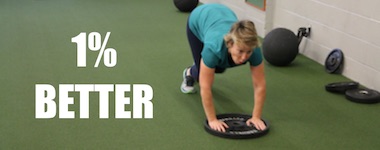Does the change of the seasons bring on a change in your sinuses too? Many people experience symptoms such as congestion, sneezing, itchy eyes or throat, and feel like their nose is going to run away from their face! If the sinus pressure makes you feel like you will never be able to get a good night’s sleep again, read on to learn about a non-pharmaceutical approach to dealing with congestion caused by the Sternocleidomastoid (SCM).
You might already know or have heard about trigger point therapy (TPT). It is non-invasive/non-pharmaceutical pain management technique in which a trained professional manipulates specific areas of soft tissue know as trigger points. A trigger point is an irritable tight spot in a taut band of skeletal muscle which sends pain or sensation that can be felt away from the muscles causing the problem, known as referred pain. For example, trigger points in one of your neck muscles may refer pain to the wrist area and is often misdiagnosed as carpal tunnel syndrome.
Let’s talk about one of the neck muscles called Sternocleidomastoid (SCM). SCM lies on the side of your neck and has two muscle bellies. As you can see the picture below, trigger points (X’s) in SCM refer pain in a wider area (red shaded area).

Here are some symptoms caused by active trigger points in the SCM.
- Tension headache (top of your head, back of your head, and forehead to eyebrow)
- Watery eyes
- Blurring eyes
- Earache
- Dizziness
- Vertigo
- Sinus congestion (sound familiar anyone?!)
The SCM causes many problems when it becomes dysfunctional, but it is very common to have trigger points in your SCM. Do you do anything that tightens your SCM on a regular basis? (SCM is mainly responsible for turning and tilting your head).
Here are some of the perpetuating factors of SCM dysfunction.
- Sleeping on your stomach (turn your head to one side overnight)
- Talking on the phone for a long period of time without headsets.
- Reading a book on the bed while turning your head to one side.
- Bad posture
Allergy symptom can be triggered by many different factors like pollen, pets or dust. But when you have sinus congestion, you may be able to try simple self-care to treat SCM to relieve the symptom.
Step 1:
Turn your head side to side to see the range of motion (how far you can look over each shoulder). Can you look further towards one side than to the other? It could be that you have tension in one or both of your SCM’s.
Step 2:
Using the hand that is on the same side as the SCM you are going to be treating, firmly pinch the SCM. Start close to the clavicle (collarbone) and massage the SCM using the same “pinch” all the way up to the bottom of your ear. You may find “hot spots,” which are more painful than others, or may even cause the referred pain pattern seen in the pictures above. When you find these “hot spots,” hold the pinch until the tight spot gets looser. Relax your neck and make sure the SCM is as loose as possible during the treatment. (See picture below)

Step 3:
Turn your head again to see if the range of motion has been improved
It may not be a 100% cure, but deactivating trigger points and increasing circulation in SCM may ease the symptom when you have a headache or sinus congestion.
Would you like someone to contact you about Trigger Point Therapy? Fill out the form here:
https://indianapolispersonaltraining.com/indianapolis-personal-training-services/trigger-point-therapy/
Trigger point therapy can help you with many ways to relieve your pain and other symptoms. For more information about Trigger Point Therapy, please contact us at 927-9689 or email at support@tfwellness.com.


